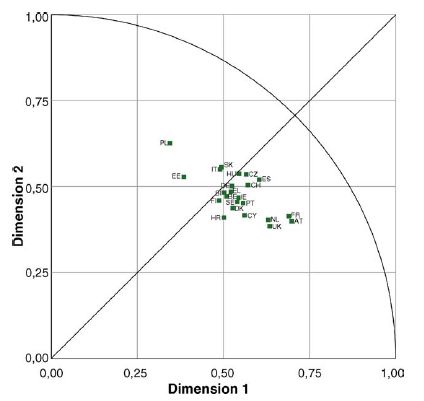
A theoretical two-dimensional model on prevalence and risk was developed. The objective of this study was to validate this model empirically to answer three questions: How do European drivers perceive the importance of several causes of road accidents? Are there important differences in perceptions between member states? Do these perceptions reflect the real significance of road accident causes? Data were collected from 23 countries, based on representative national samples of at least 1000 respondents each (n = 24,372). Face-to-face interviews with fully licensed, active car drivers were conducted using a questionnaire containing closed answer questions. Respondents were asked to rate 15 causes of road accidents, each using a six-point ordinal scale. The answers were analyzed by calculating Kendall’s tau for each pair of items to form lower triangle similarity matrices per country and for Europe as a whole. These matrices were then used as the input files for an individual difference scaling to draw a perceptual map of the 15 items involved.
The hypothesized model on risk and prevalence fits the data well and enabled us to answer the three questions of concern. The subject space of the model showed that there are no relevant differences between the 23 countries. The group space of the model comprises four quadrants, each containing several items (high perceived risk/low perceived prevalence items; high perceived risk/high perceived prevalence items; low perceived risk/high perceived prevalence items and low perceived risk/low perceived prevalence items). Finally, perceptions of the items driving under the influence of alcohol, drugs and medicines and driving using a handheld or hands free mobile phone are discussed with regard to their real significance in causing road accidents. To conclude, individual difference scaling offers some promising possibilities to study drivers’ perception of road accident causes.
| ID | pj20 |
| Manuscript | |
| DOI | |
| Tags | driver behaviour, field surveys |







